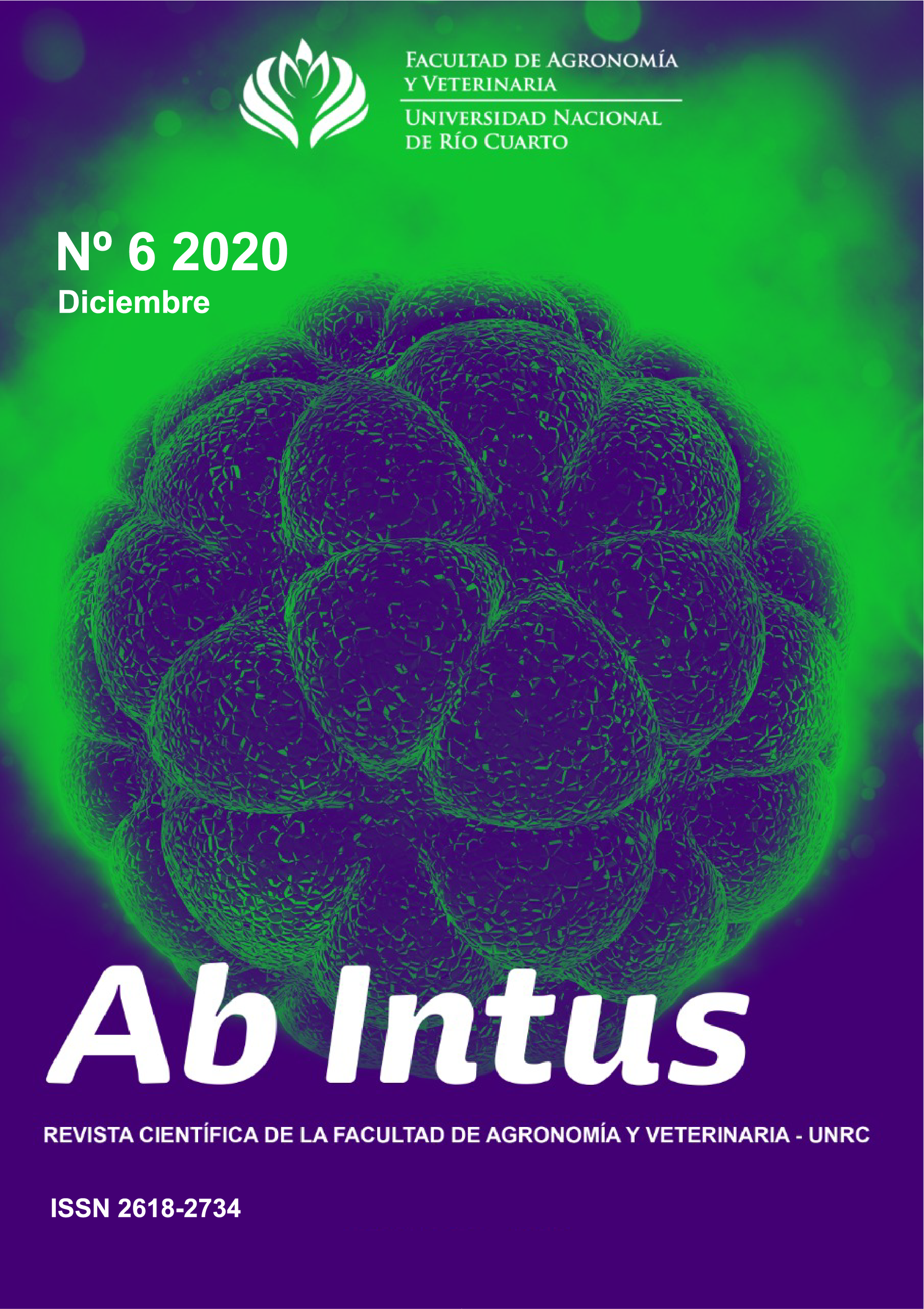Structural properties and resistance to bending at three points in the middle part of the diaphysis of the proximal phalanx of the horse´s manus
Abstract
Diseases of musculokeletal system produce disabilities in horses. Morfological study of the bone reflects the importance of providing biomechanical knowledge. The aims of this work were to determine the structural properties of the proximal phalanx of the finger of manus, and its relationship with the resistance to flexion at three points in different age groups in horses. The proximal phalanges of 10 creole mongrel horses were studied in two age groups, weight and length of the bone were taken, a transverse osteotomy was performed in the middle part of the diaphysis, and it was measured cortical thickness and areas.
The right proximal phalanx was subjected to a three point flexion test. The variables under study were subjected to descriptive and inferential statistical analyses. Differences are observed between areas, the total area is greater than the cortical area and the cortical area is greater than the medullary cavity (p <0,05). The total area depends on the weight of the bone (R²= 0,70, p =0,0026), 70% of the total área is explained by weight. The strength of the bone depends on the total área (R2= 0,77, p =0,0008), weight (R2= 0,73, p=0,0015) and age of animals, the olders horses showed greater resistance (p <0,05).
Downloads
References
Agüera, E. y Sandoval, J. (1999). Anatomía aplicada del caballo. Segunda edición. Harcourt Brace. España. 113-121.Ane-caballos.blogspot.com
Bigot, G., Boudizi, A., Rumelhart, C. and Martin-Rosset, W. (1996). Evolution during growth of the mechanical properties of the cortical bone in equine cannon-bones. Medical Engineering & Physics.18 (1): 79-87.
Bigley, R., Griffin L., Christensen L., Vandenbosch, R. (2006). Osteon interfacial strenght and histomorfometry of equine cortical bone. Journal of Biomechanics. 39: 1629-1640.
Caeiro, J., González, P., Guede, D. (2013). Biomecánica y hueso (II): Ensayos en los distintos niveles jerárquicos del hueso y técnicas alternativas para la determinación de la resistencia ósea. Revista de Osteoporosis y Metabolismo Mineral. 5 (2):99-108.
Currey, J. D. (1984). The mechanical properties of materials and the estructure of bone. In: The Mechanical Adaptation of Bone. University Press. Princeton, USA. Pág. 3-37.
Dzierzecka, M. & Charuta A. (2012). The analysis of densitometric and geometric parameters of bilateral proximal phalages in horses with the use peripheral cuntirative computed tomography. Acta Veterinaria Scandinavica. 54:41.
Fioretti, C., Natali, J., Galán, A., Rivera, M. C., Moine, R., Varela, P., et al. (2011). Características Mecánicas Dinámicas del Fémur Aislado de Perro, Sometido Prueba de Impacto. International Journal of Morphology. 29: 716:722.
Fioretti, C., Galán, A., Moine, R., Varela, M., Varela, P., Mouguelar, H., et al. (2013). Características Mecánicas Dinámicas de la Tibia Aislada de Perro Sometida a Prueba de Impacto. International Journal of Morphology. 31 (2): 562-569.
Fioretti, R.C., Moine, R., Varela, M., Quinteros, R., Varela, P., Galán, A.M., et al. (2018). Densidad mineral ósea y resistencia ante la prueba de compresión en la mitad de la diáfisis del hueso fémur de perro. Ab Intus. 1 (1): 43-52.
Galán, A, Rivera, C., Moine R., Ferraris, G., Gigena, S., Natali, J. (2002). Propiedades morfométricas del metacarpiano III de potrillos mestizos. Revista chilena de Anatomía. 20(3): 285-290.
Lawrence, L., Ott, E., Miller, G., Paulos P., Piotrowski, G., Asquith, R. (1994). The mechanical properties of equine third metacarpals as affected by age. Journal Animal Science. 72 (10): 2617- 2623.
Les, C., Stover S., Kayak, J., Taylor, K., Williks, N. (1997). The distribution of material properties in the equine third metacarpal bone serves to enhance sagittal bending. Journal Biomechanics. 30 (4): 355-361.
Moine, R., Galán, M., Vivas, A., Fioretti, C., Varela, M., Bonino, F., et al. (2015). Propiedades Morfológicas en la Parte Media de la Diáfisis del Hueso Metacarpiano III de Equino Mestizo Criollo. International Journal of Morphology. 33 (3): 955-961.
Moine, R., Rivera, C., Vivas, A., Ferraris, G, Galán, A., Natali, J. (2001). Morfometría y determinación de calcio y fósforo en la parte media de la diáfisis del metacarpiano III en yeguas mestiza con criollo. Archivo de Medicina Veterinaria. 1: 63 - 68.
Natali, J., Wheeler, J.T., Kohl, R., Varela, P. (2008). Comparación de las Características Mecánicas Estáticas del Fémur Aislado de Perro, con y sin la Colocación de una Placa de Ortopedia Fabricada en polipropileno. International Journal of Morphology. 26 (4): 791-797.
Natali, J., Fioretti, R., Moine, R., Gigena, M., Mouguelar, H., Varela, M., et al. (2019). Morfología y comportamiento biomecánico de la falange proximal de la mano del caballo mestizo criollo. Ab Intus. 3 (2): 56-62.
Singer, E., Garcia, T., Stover, S. (2015). Hoof position during limb loading affects dorsoproximal bone strains on the equine proximal phalange. Journal of biomechanics. 49. 1930-1936.
Yeni, Y.; Brown, C.; Wang, Z., Norman, T. (1997). The influence of bone morphology on fracture toughness of the human femur and tibia. Bone. 21 (5): 453-459.
Downloads
Published
How to Cite
Issue
Section
License
Copyright (c) 2023 Ab Intus

This work is licensed under a Creative Commons Attribution-NonCommercial 4.0 International License.


















